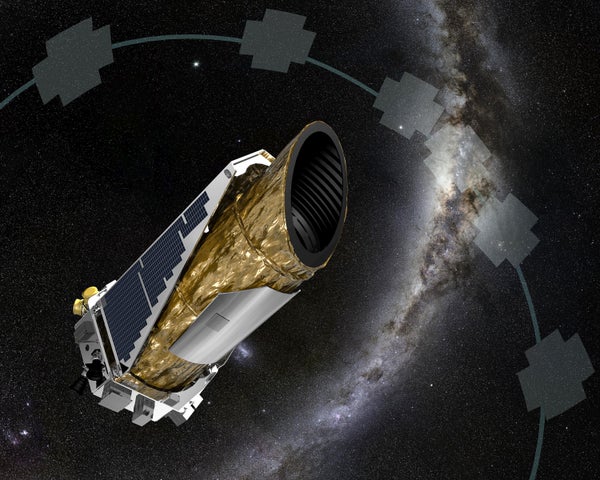We Need Small Astronomy as Much as Big Astronomy
In an era of budget-busting mega-telescopes, we shouldn’t forget the importance of smaller telescopes, more focused missions and the unexpected surprises they reveal about the universe
Artist’s rendering of NASA’s Kepler space telescope and the observation pattern for its extended mission, called K2.
NASA/Ames/JPL-Caltech
NASA’s flagship orbiting mega-observatory, the James Webb Space Telescope, launched billions of dollars over budget and over a decade late. The space agency’s next prize, the Vera C. Rubin Observatory, will sport an 8.4-meter-diameter mirror and hopes to achieve first light in 2025 after taking nearly half a billion dollars to complete. The National Science Foundation’s Thirty Meter Telescope, currently entangled in controversy over its proposed site on Mauna Kea, is projected to cost $2.65 billion. And the international Square Kilometer Array, a radio telescope network scattered across South Africa and Western Australia, has a project price tag of over $2 billion.
It will take many years, if not decades, before the scientific community and the public will decide whether these astronomical efforts, in every sense, were worth their time and expense.
That won’t be an easy calculation. Entire careers are sunk into these mega-projects. Graduate students can rise to fully tenured professor in the time it takes for these instruments to go from concept to commissioning—assuming they survive the inevitable political machinations required for their completion.
On supporting science journalism
If you’re enjoying this article, consider supporting our award-winning journalism by subscribing. By purchasing a subscription you are helping to ensure the future of impactful stories about the discoveries and ideas shaping our world today.
In this growing era of giant observatories, multidecade observation campaigns, and continent-spanning collaborations, astronomers should instead…
Read the full article here







